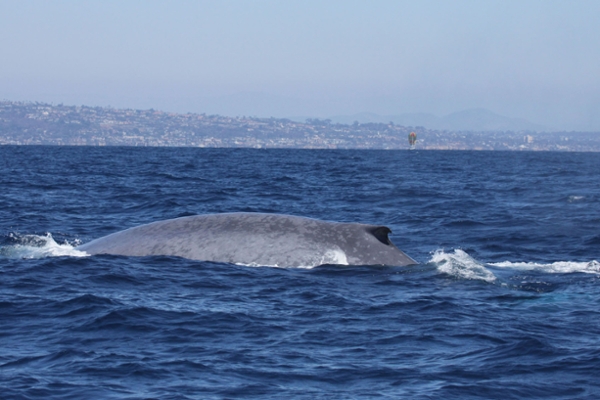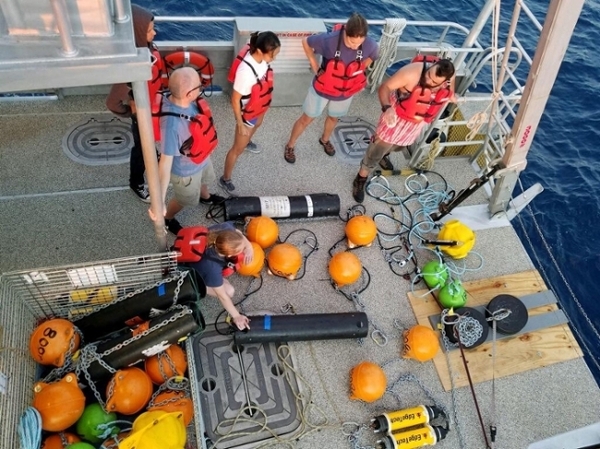The Sound of Science: Dr. Ana Širović Awarded New & Continuing Funding to Further Marine Bioacoustic Research
November 27, 2019
Tweet
By Andréa Bolt
There are a multitude of ways in which to study how humans are affecting the ocean and the marine life within it - sound happens to be the way Texas A&M University at Galveston marine biology professor and bioacoustician Dr. Ana Širović measures such interactions.
Dr. Širović’s work was recently recognized in a big-as-a-blue-whale type of way - in research grants to the tune of approximately $160,000.
This funding, via the Flora Family Foundation and United States Navy’s Living Marine Resources Program will aid Širović in better understanding the connection between human and whale activity in the Santa Barbara Channel, as well as developing methods to study baleen whales in the Pacific Ocean.
Both grants are the continuation of projects Širović has been involved with for some time, relating to blue and fin whales and how recording the sounds they make, scientists like Širović can get closer to developing approaches for mitigating impact of human activities on the species.
“We are asking biologically-important questions with this research. With an increase in shipping traffic and accompanying ocean noise, understanding the impact that noise has on marine animals is very important” Širović stated.
Širović’s first study, initiated by the Benioff Ocean Initiative, uses crowdsourcing for whatever big, important problem they want solved. In this case, the issue is working to mitigate ship strikes of large whales in the Santa Barbara Channel. Blue and humpback whales species that are common in this area also happen to be endangered or vulnerable to extinction.
The project attacks the issue in two separate ways. The first is through using acoustics by listening to whales in the area in near real-time and sending daily alerts to ships when whales are detected acoustically. The other approach involves looking at historical and environmental data, then using current data to predict where and when these animals could be present.
Širović and Mark Baumgartner, a colleague from the Woods Hole Oceanographic Institution have been working on testing and fine-tuning the automated detector processes and are providing near real-time information on whale acoustic presence in the channel. The award is providing partial support for an analyst in Širović’s Marine Bioacoustics Lab who is identifying calls recorded on the acoustic devices and helping improve the call library for future use and analysis.

The additional funding is coming from the Living Marine Resources program, one of the U.S. Navy programs that funds marine mammal research.
This will allow Širović to continue work on methods that develop density estimates of blue and fin whales from fixed point passive acoustic recorders.
“The question is if we have passive acoustic recorders that are listening all the time, how can we convert the number of calls we hear on them to an actual number of animals? To do that, we need to know how often an animal calls and what’s the probability that it will call at any one time,” she explained. “What does 10 calls mean in terms of the number of animals? We’re developing models of calling behavior and calling probabilities. Also, from the recorder side of things, we’re working on developing detectors to automatically extract call time series.”
This grant award is helping Širović do just that by supporting a postdoctoral scholar who is working on automated methods to extract fin whale calls from multi-year data sets.
We’re sure every ship captain, diving enthusiast and “Finding Nemo” fan is hopeful Širović and her team will continue swimming toward a science-backed solution to better manage whale traffic and human movement.
###
Media contact:Marketing and Communications
a_bolt@tamug.edu
409.740.4929
More:
Read more about Marine Biology
Read more about Marine Sciences
Read more about Maritime Transportation